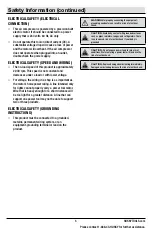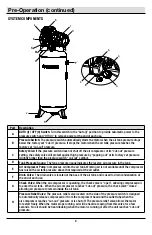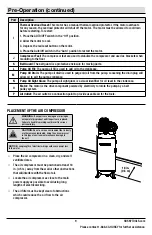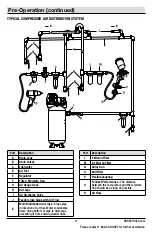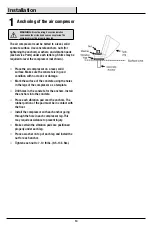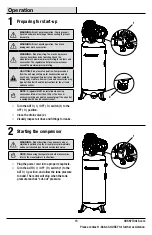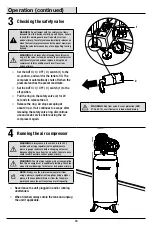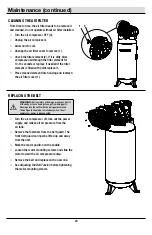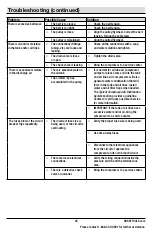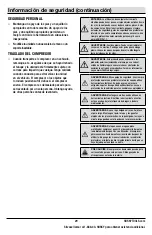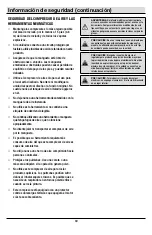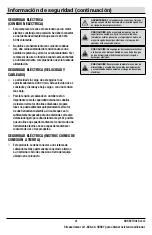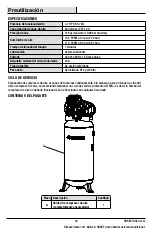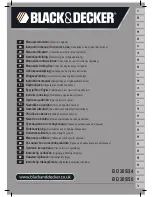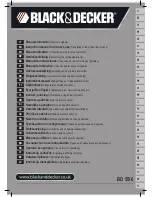
18
Maintenance
GENERAL MAINTENANCE
□
Condensate forms in the tank when
there is humidity in the air. Depending on
the environmental conditions, drain the
condensate daily and/or every hour. For
instructions, see
Draining the tank
.
□
The safety valve automatically releases air
when the receiver pressure exceeds the preset
maximum.
□
Inspect the tank annually for rust, pin holes,
or other imperfections that could cause it to
become unsafe.
□
Avoid using solvents when cleaning plastic
parts. Most plastics are susceptible to damage
from various types of commercial solvents and
may be damaged by their use.
□
Use clean cloths to remove dirt, dust, oil,
grease, etc.
WARNING:
When servicing, use only identical Husky
replacement parts. Use of any other parts may create a
hazard or cause product damage.
WARNING:
Always release all pressure, disconnect from
power supply, and allow unit to cool to the touch before
cleaning or making repairs on the air compressor.
WARNING:
Do not at any time let brake fluids, gasoline,
petroleum-based products, penetrating oils, etc., come
in contact with plastic parts. Chemicals can damage,
weaken or destroy plastic which may result in serious
personal injury. Electric tools used on fiberglass material,
wallboard, spackling compounds, or plaster are subject to
accelerated wear and possible premature failure because
the fiberglass chips and grindings are highly abrasive to
bearings, brushes, commutators, etc. Consequently, we
do not recommended using this tool for extended work on
these types of materials. However, if you do work with any
of these materials, it is extremely important to clean the
tool using compressed air.


